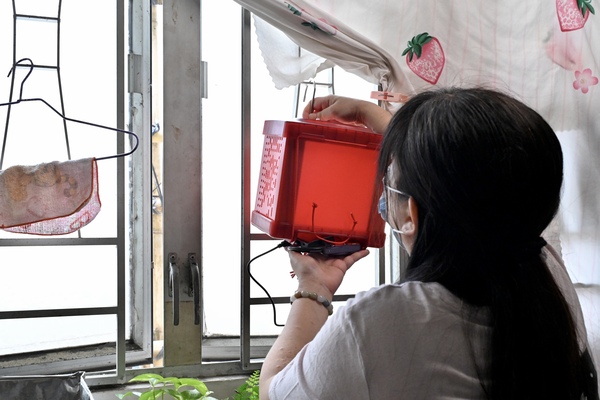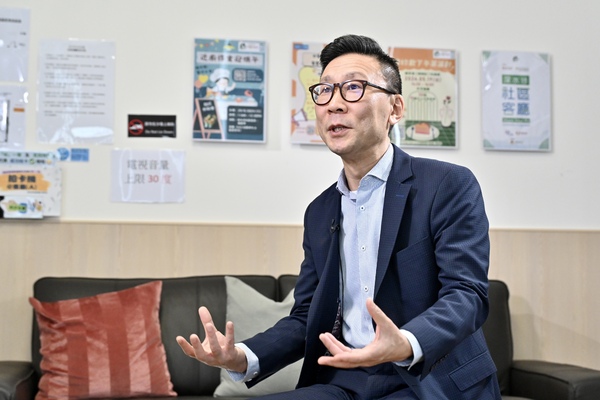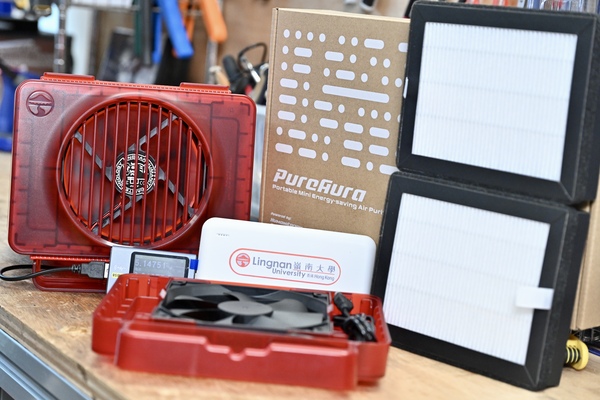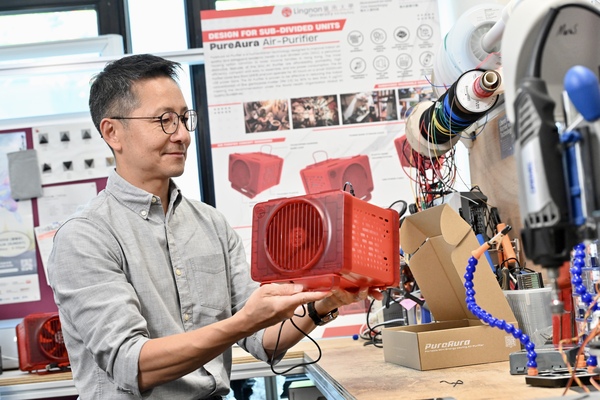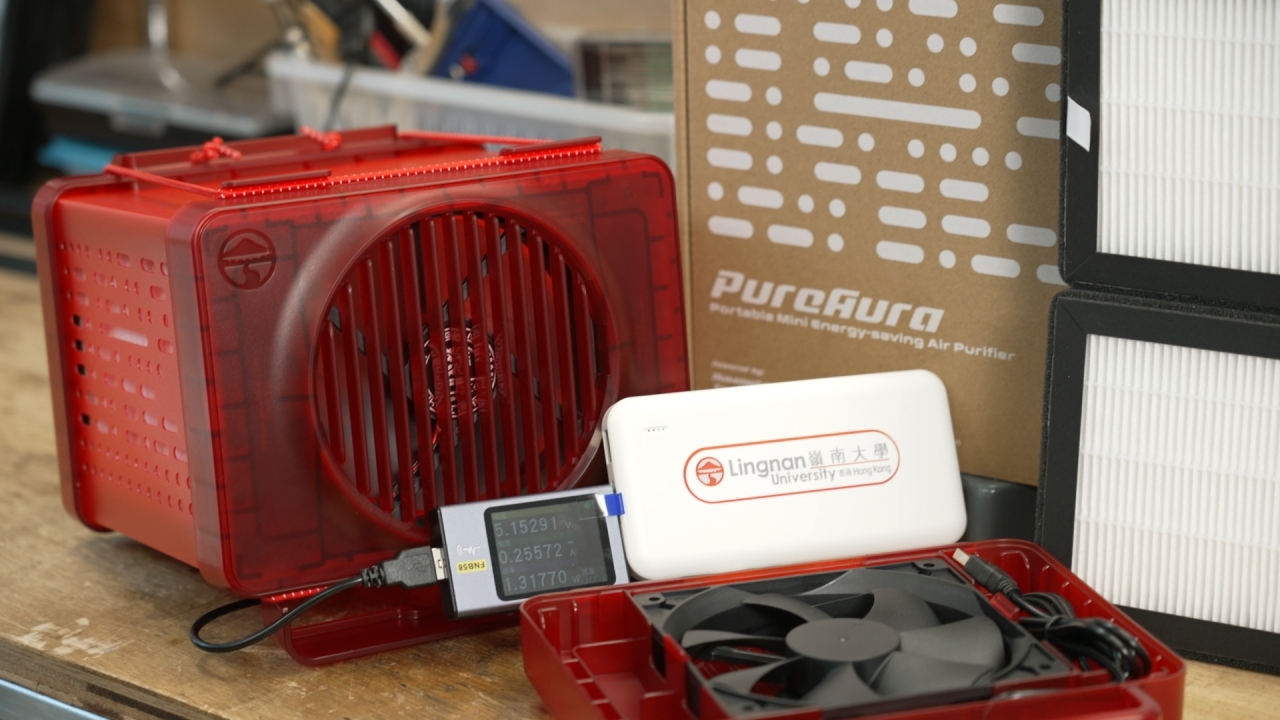Raising air quality in cramped units
Siu Fong (a pseudonym) and her seven-year-old daughter live in Cheung Sha Wan, in a subdivided unit of less than 100 sq ft.
As the unit is close to a busy road, their place is very dusty, even though they seldom open the window. Siu Fong explained that if she cleans surfaces in the morning, by the afternoon they tend to be covered in a new layer of dust, causing her discomfort.
“My nose was itching,” she said. “I kept scratching and it turned red. To purify the air, I have planted a lot of plants at home.”
Siu Fong and her daughter were recently given an air purifier by the Sham Shui Po Community Living Room. After about half a month of using it, PM2.5 concentration in their home has decreased substantially.
The device is small, measuring less than 20cm in length, width, and height, and weighs only about 500g.
“The device does not take up much space and is lightweight,” said Siu Fong. “We can place it on the table or hang it up. There is less dust than before. I am less prone to nasal allergies, and I sleep much better.”
Poverty alleviation
According to data from the 2021 population census, one in 10 residents of Sham Shui Po district, or about 44,000 people, live in a subdivided unit.
As part of a strategy of targeted poverty alleviation, the Sham Shui Po District Office is committed to deploying locally developed technologies to serve the community.
District Officer (Sham Shui Po) Paul Wong said that in 2022 the District Office collaborated with the Development Bureau’s Spatial Data Office to better understand conditions in subdivided units.
“The Spatial Data Office had some data about the environment and building size of about 1,000 buildings in Sham Shui Po,” he said. “We have also some big data about the population, or population profile, in these buildings. With these data, we managed to have an overall picture of the average unit size in different buildings in Sham Shui Po.
“Our volunteers visited buildings that we deemed more crowded and provided targeted assistance to people most in need.”
Funding of around $200,000 was also allocated through the Community Involvement Programme to distribute 1,000 older-type air purifiers with wooden casings to families in subdivided units.
Subsequently, in April of this year the District Office began facilitating donations of at least 400 air purifiers of the new type. The donations are being made via the Sham Shui Po Community Living Room and another soon-to-open Community Living Room that will be operated by St James’ Settlement.
Users are also invited to participate in data collection exercises to assess the technology’s effectiveness.
Filtering pollutants
The new-model air purifier was developed by Lingnan University’s Lingnan Entrepreneurship Initiative. It features a streamlined design, consisting of a small fan, two filter papers, and recyclable plastic casing, and it takes only a few minutes to assemble.
Lingnan University Lingnan Entrepreneurship Initiative Director Prof Albert Ko highlighted that the PM2.5 concentration in subdivided units is three to five times higher than that in regular indoor environments due to poor ventilation.
The air purifier developed by the initiative can filter coronavirus, dust and allergens, and is able to reduce PM2.5 concentrations by 80%.
“The main problem of the air quality of subdivided units is that they do not have windows, or they have windows that open up to an environment that is not very friendly,” said Prof Ko.
“We put one of the air purifiers as a test piece inside a subdivided unit. From 2m away, we put a meter to measure PM 2.5 concentration. We can see that as soon as we turn on the air purifier, within 30 seconds we can already see a significant drop in the level of pollutants.”
Efficient technology
The purifier costs around $150 and it is recommended that users replace the filter papers every six months, at a cost of around $30.
Prof Albert Ko stressed that the device is energy-efficient and does not require special maintenance, adding that it can be charged using a standard power bank.
“The kind that we carry around every day is good enough to charge your phone maybe two and a half times but is actually good enough to power the air purifier for five days, for seven hours a day.”
Last month, the air purifier won the Gold Award at the Geneva International Exhibition of Inventions, and also the iF Design Award, in the building technology category. Prof Ko said the research team will continue to work on developing washable and reusable filters and on designing air purifiers of different sizes and airflow capacities to meet different needs.
